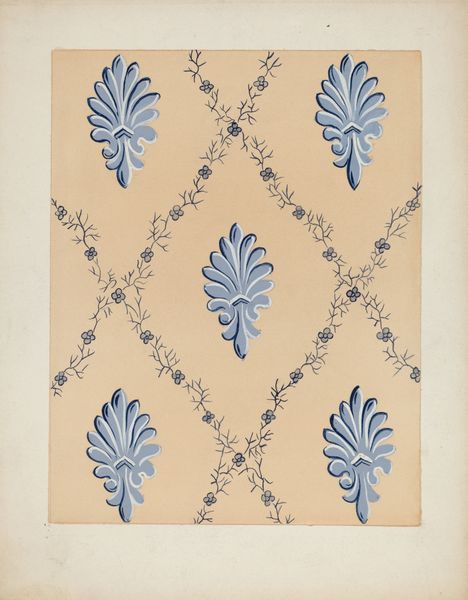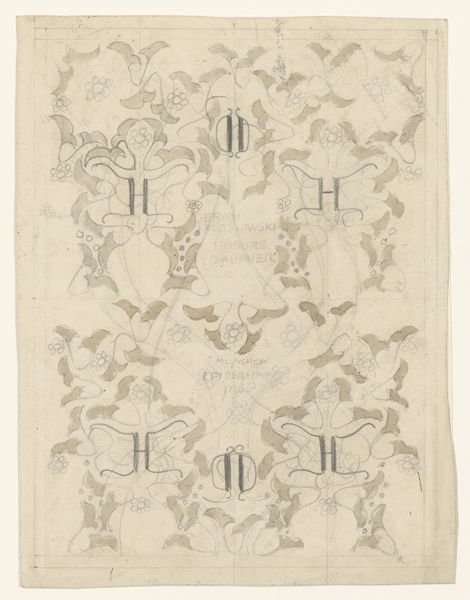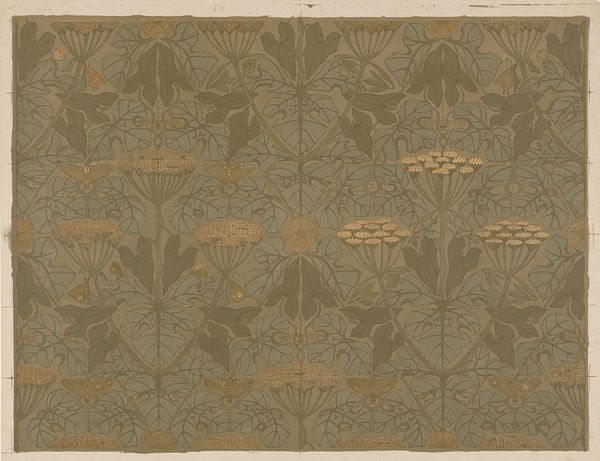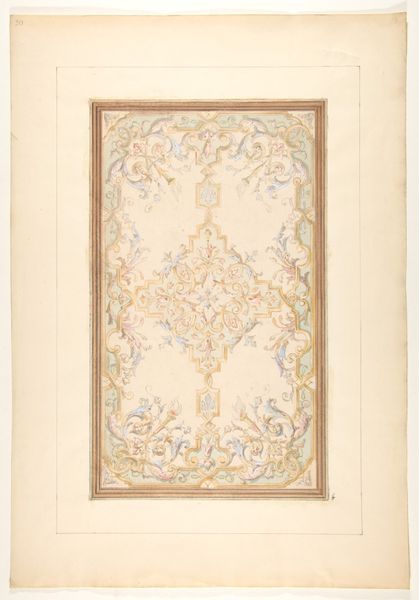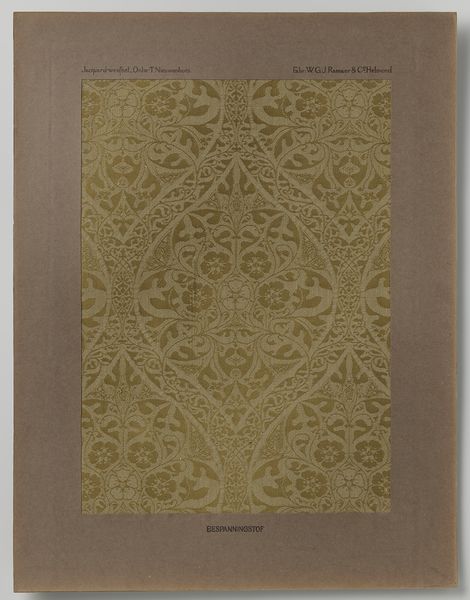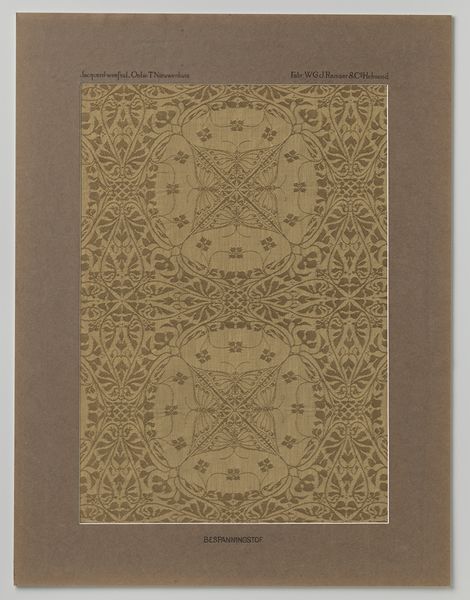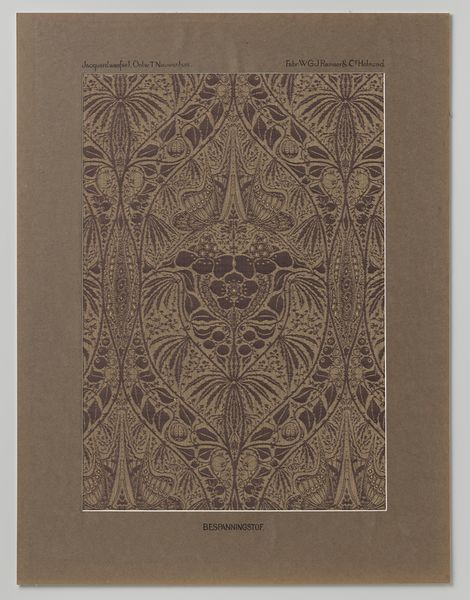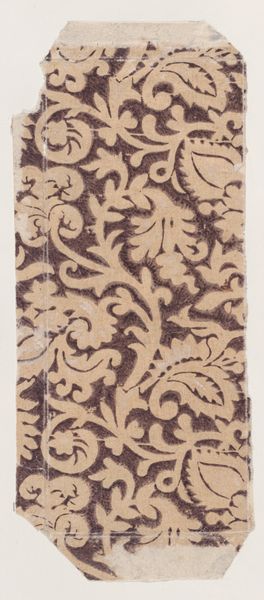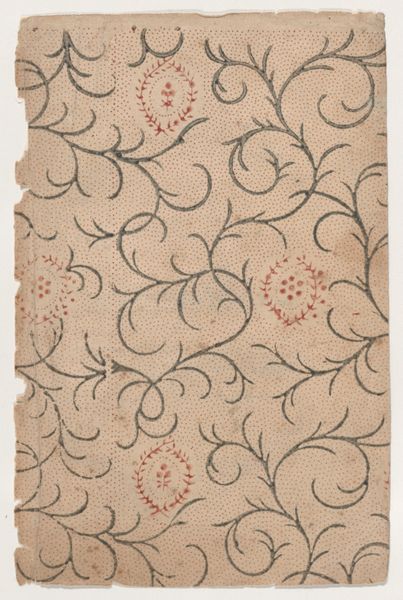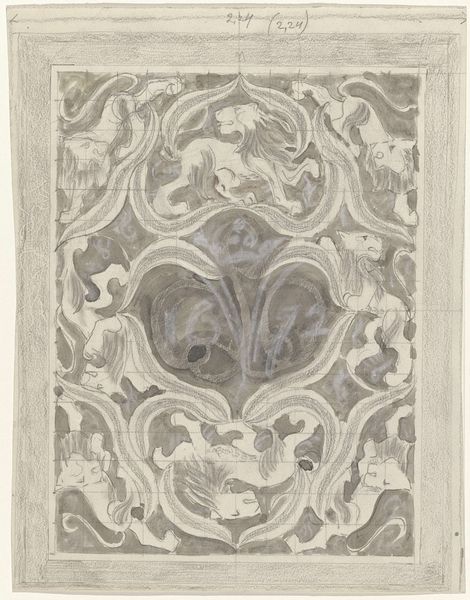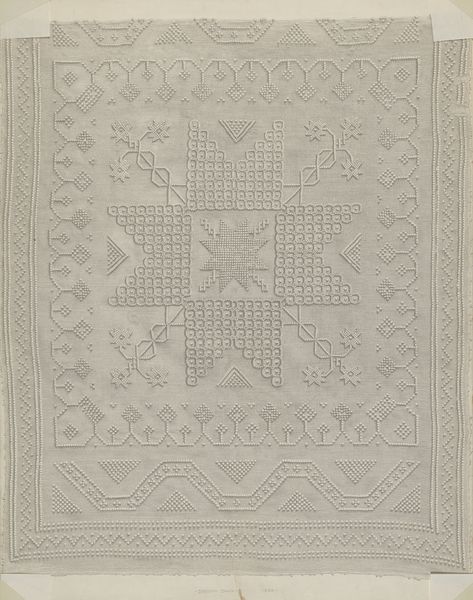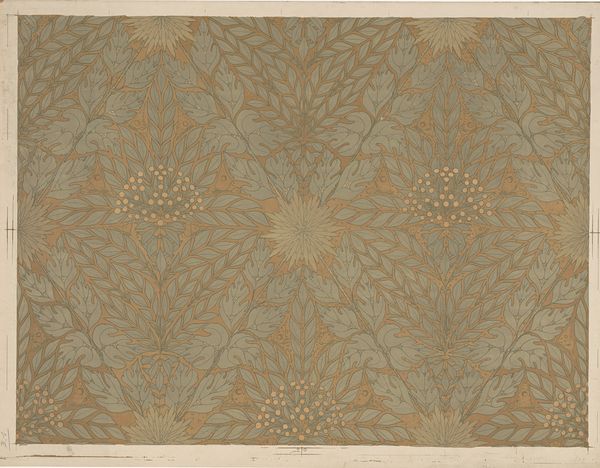
drawing
#
drawing
#
geometric
#
decorative-art
Dimensions: overall: 30.4 x 22.6 cm (11 15/16 x 8 7/8 in.) Original IAD Object: 20" repeat
Copyright: National Gallery of Art: CC0 1.0
Curator: This intriguing design before us is titled "Wall Paper," attributed to Karl Joubert, and believed to have been created around 1937. It’s a drawing that exemplifies the Pattern and Decoration movement through the creation of an infinitely repeatable ornament. Editor: It immediately strikes me as quite stately. The geometric framework, the use of muted earth tones, and the stylized botanical elements-- it creates a somewhat conservative yet calming presence. There's a strange tension between the flatness of the repeating pattern and the implied depth of the trompe-l'oeil framing. Curator: I find the reference to formal architectural structure interesting, with the suggestion of ceiling coffers adorned with grape leaves. Given its era, it's interesting to consider its relationship to both Art Deco’s geometric stylization and the broader historical revivalism popular at the time, reflecting an establishment aesthetic and an inherent resistance to the global depression. Editor: The fruit and leaf motifs lend the work an interesting cultural weight. Consider the implications of using the imagery of lush abundance and celebration—is this speaking to societal hope? Does this reference upper-class tastes and ideas of classical excess at a time when such lavishness might have been frowned upon? I keep thinking about the way interior design reflects deeper anxieties of social stratification. Curator: The piece is rendered with a precise technique characteristic of its intended function; mass production. The symmetry of its construction allows one to appreciate Joubert's design and ingenuity. It speaks to its adaptability and its intention to serve decorative function as "Wallpaper." Editor: It would be fascinating to trace the ways in which such design choices informed constructions of class and gender, shaping notions of the domestic and influencing personal and social behavior, at the time, and also the modern-day interpretation. After all, how much has really changed? Curator: That's a vital question when considering historical artwork. Thinking about its journey through time, and what it communicates about evolving societal perceptions—that, ultimately, is where its significance resides. Editor: Precisely. Considering a design intended to be endlessly reproduced opens up intriguing conversations about the cultural currency of decorative motifs, gender, and the socio-economic contexts embedded in something as seemingly innocuous as "Wallpaper."
Comments
No comments
Be the first to comment and join the conversation on the ultimate creative platform.

